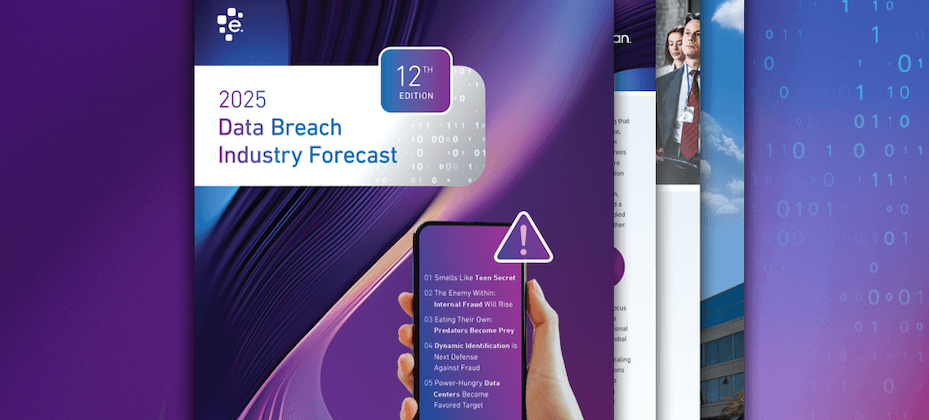
As businesses, we want to know our consumers and their habits so we can offer the best customer experience possible, whether in store or online. This should include providing the right security measures that will protect consumers and businesses from fraud, without compromising that consumer experience. In research published earlier this year, our Global Fraud and Identity report cites two-thirds (66 percent) of consumers surveyed said they appreciate security protocols when transacting online. Younger consumers (42 percent) said they are more likely to engage online if there weren’t as many security hurdles, versus 30 percent of those who are 35 and older. It’s evident that businesses need to provide a good balance between providing consumers with a positive experience while having efficient security protocols in place. With 90 percent of consumers using digital channels for banking and shopping, consumers and businesses need to be protected from fraudulent transactions. The varying degree of tolerance toward security presents a bit of a challenge, in that it’s hard to find a one-size-fits-all solution for everyone. Millennials are accustomed to speed and convenience, having grown up with mobile phones and the Internet. This is evident in their preference toward pre-filled login credentials when conducting financial transactions online. Older generations, by contrast, had to navigate the (often very painful) evolution to the digital world. Therefore, it’s not surprising that there’s a difference in overall tolerance toward security measures in place. Both age groups agree that passwords enhance the online experience, but fewer millennials believe passwords alone are the best way to protect their information. On the business side, our research shows that most organizations prioritize convenience over security, however they still use passwords as their top form of authentication. Business owners don’t necessarily think it’s the safest method to prevent fraud, but it’s a well-understood security precaution. Ironically, one-quarter of consumers have forgotten a username or password within the past six months, causing significant consumer frustration. While businesses have come to terms with acceptable levels of fraud losses, we encourage a change in mindset: to invest in a solution that can help prevent fraud and reduce loss more efficiently. Experian CrossCoreTM, for example, is the first smart, open, plug-and-play platform for fraud and identity services that helps businesses catch fraud faster, improve compliance, and enhance customer experience. We’ve helped our clients screen more than 15 billion fraud events in just one year, and won’t stop there. When you have the right solution in place, that’s when you know that effective security and great customer experience are not mutually exclusive, for older generations and millennials alike; they go hand-in-hand.

The world in 2018 is defined by data. Vast quantities of information flow through our lives like threads across an elaborate tapestry. On a micro level, these threads bind the business world together. But they also come together to weave a picture of the economy that is colourful, detailed, and uniquely fascinating. At Experian, we process more than 1.5 billion records per year, making us specialists in the processing and understanding of this data – and in making sure it is used for the benefit of consumers and businesses. To share our unique perspective, we’ve created our first ever Spending Power Index. The index looks at the UK’s income and spending habits, including both a detailed view of the present, and insight into longer term trends and the nation’s changing preferences. Giving businesses the bigger picture Stepping back from day-to-day business to look at the whole economy is a chance to identify new opportunities and work out the best ways of adapting to new challenges. The insights we’re providing through the Spending Power Index are designed to fuel that process by offering a view of existing and emerging trends across all demographic segments of the UK economy. What is the Spending Power Index? We’ve defined ‘Spending Power’ as a combination of key factors: Average income growth over time Levels of spending for one demographic group when compared to another Levels of spending as a proportion of incomes These combined factors reveal a wealth of hidden information about income and spending. All these insights have been drawn from Experian’s modelled data using secondary sources such as our ‘Financial Strategy Segmentation’ (FSS) tool. The data for this comes from a range of publicly and commercially available sources, such as the edited Electoral Roll, the UK Census and permission-based market research data taken, for example, from the lifestyle questionnaires many of us complete. New insights and confirming market trends Some of the insights revealed by the index have been surprising, while others fit into social trends that are already well understood. We found some areas of significant shift, such as the movement away from owning possessions and towards spending on life experiences. But we also confirmed some new and fascinating trends such as the emergence of Generation X’s forty somethings as the biggest earners and spenders in the UK economy. Find out more by reading the full Spending Power Index report here.

In our increasingly digital world, there’s a growing expectation among consumers to only receive personal and relevant content from brands. However, with the proliferation of devices, delivering on this expectation is becoming more of a challenge. It’s more difficult than ever for advertisers to understand their audience and reach them across all marketing channels. But, Experian is here to help. We recently announced our activation partners program – a natural next step in our commitment to helping brands uncover the right audience segments and deliver advertising campaigns that resonate with consumers. We’re teaming up with marketing technology leaders such as 4C, Adaptly, Brand Networks, Kenshoo, SocialCode and Unified to help brands deliver relevant content. Through the activation partners program, marketers can leverage their own first-party data, third-party data from Experian’s ConsumerViewSM marketing database, or a combination of the two, to build audience segments and optimize campaigns. Then, they can work with any of the marketing technology partners to deliver personalized advertisements to people across any marketing channel — including social media, television and mobile, as well as all major media organizations. This program helps brands unlock the power of data and technology to make the right marketing decisions and better connect with individuals. And with more than 30 years in the advertising business, consumer privacy is at the heart of what we do and the way we work. We remain vigilant when it comes to data security and integrity, including our own commitment to strict standards regarding permissible uses of data. Ultimately, partnerships like this help move the industry forward. We know the advertising industry is evolving and we see this as an opportunity for continuous innovation. As always, our goal is to bring that innovation and power to brands through the solutions—and partnerships—we create.


